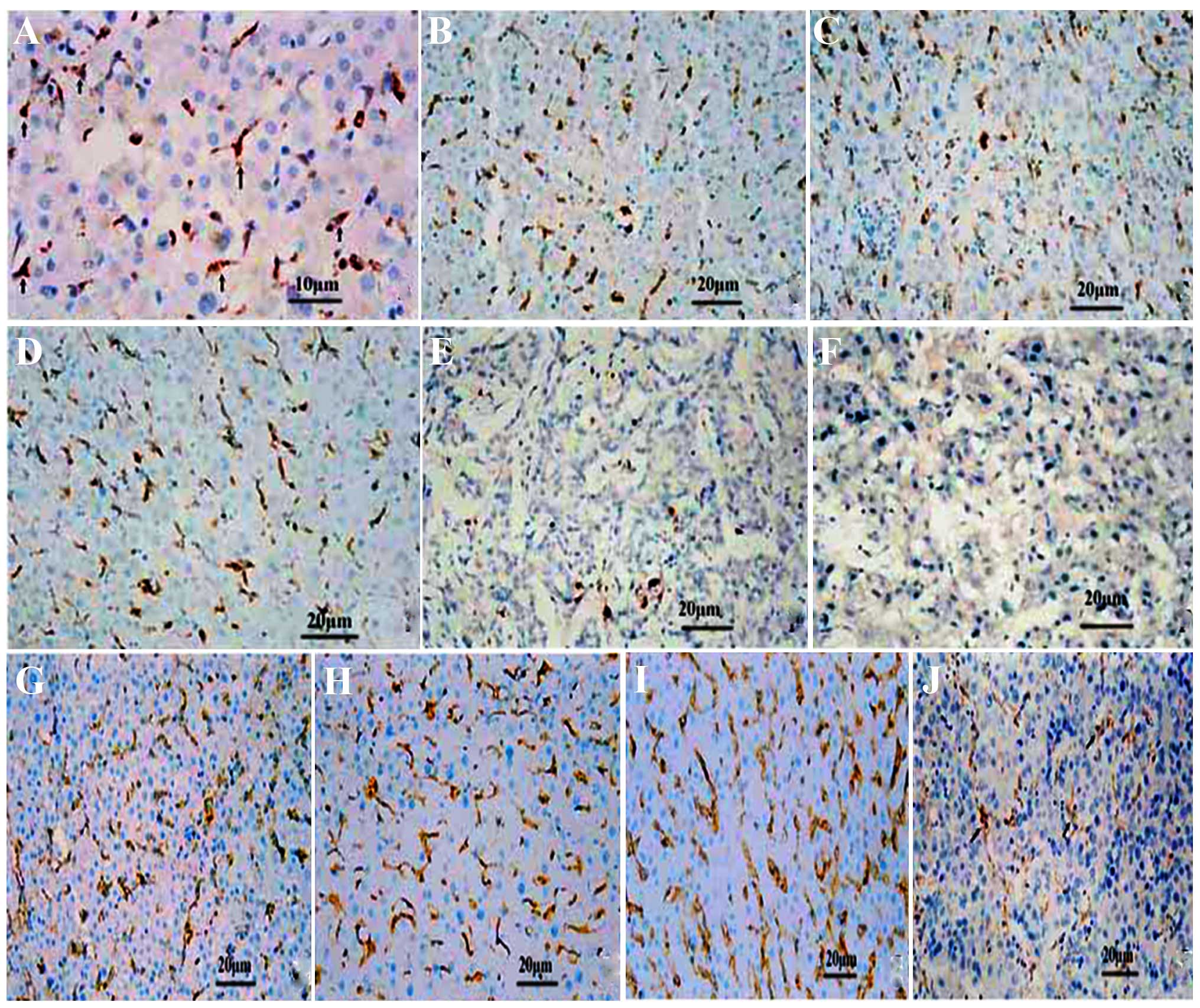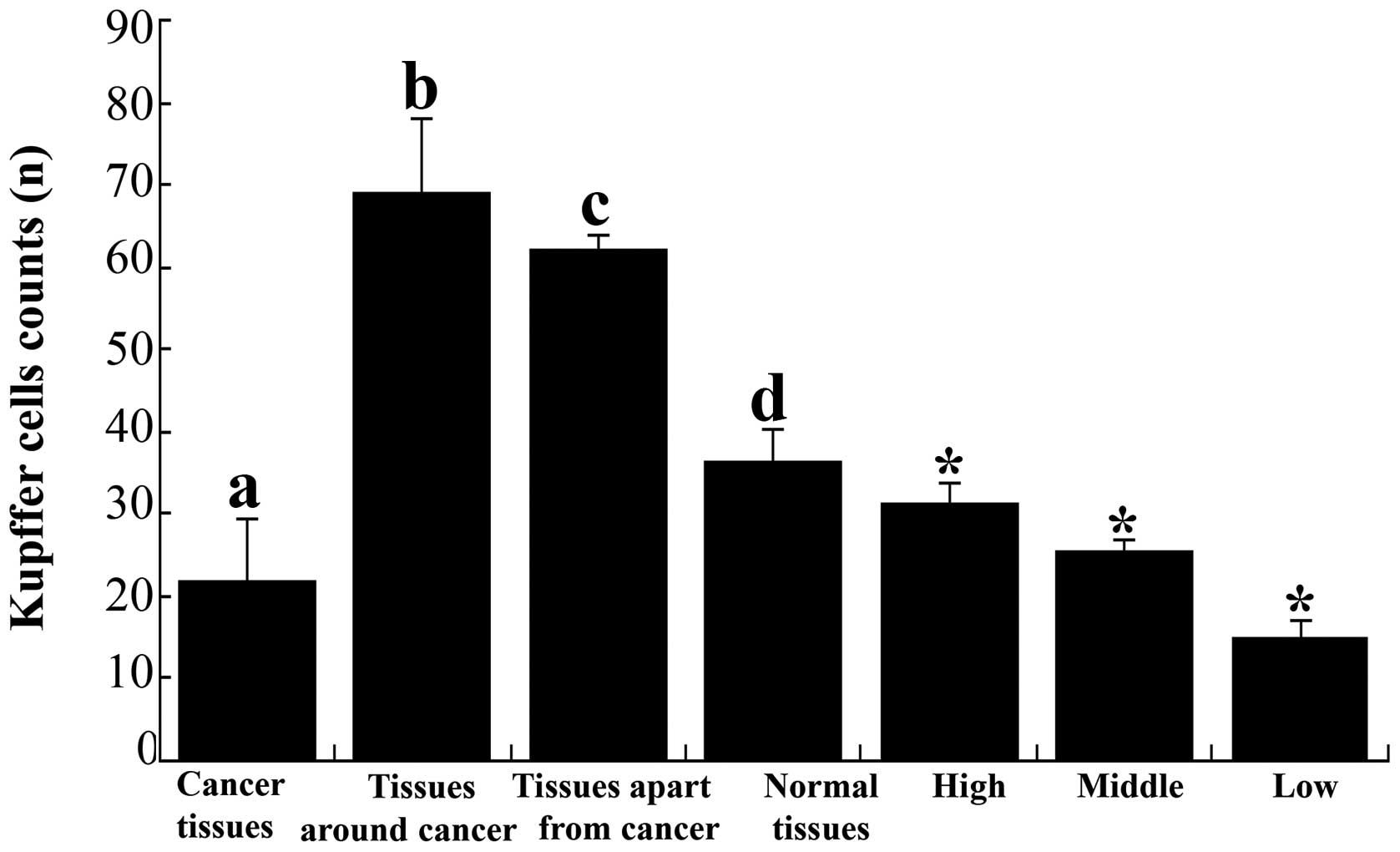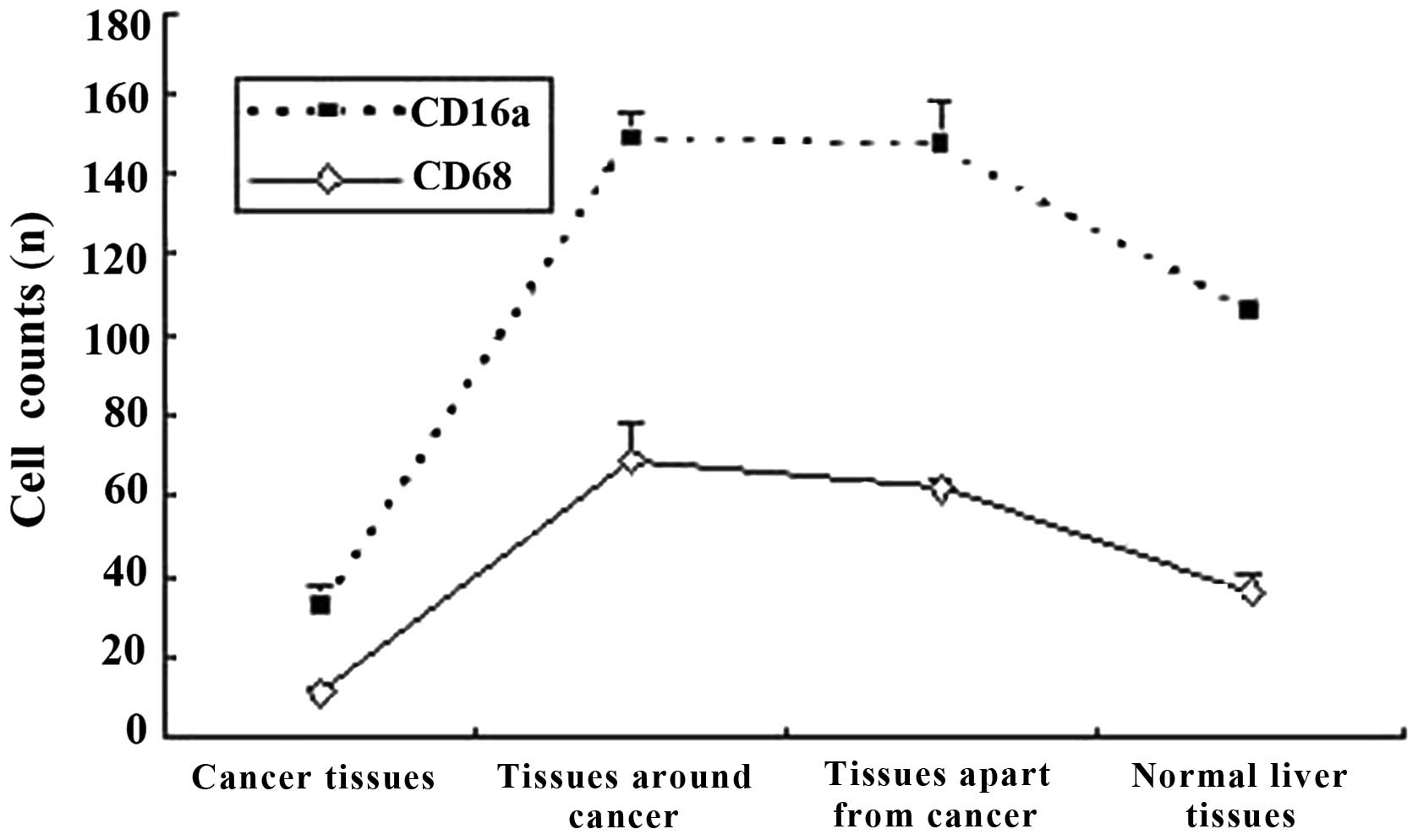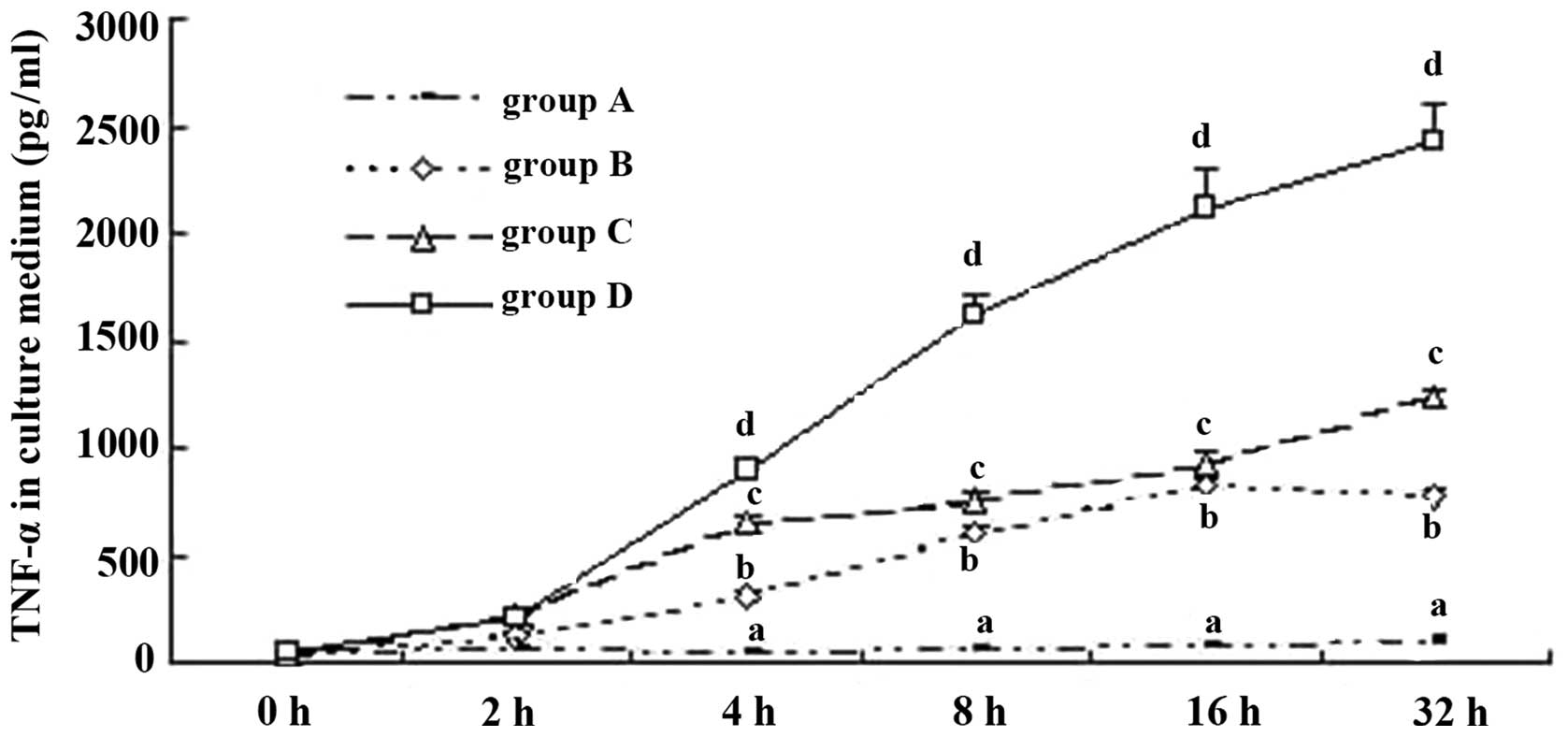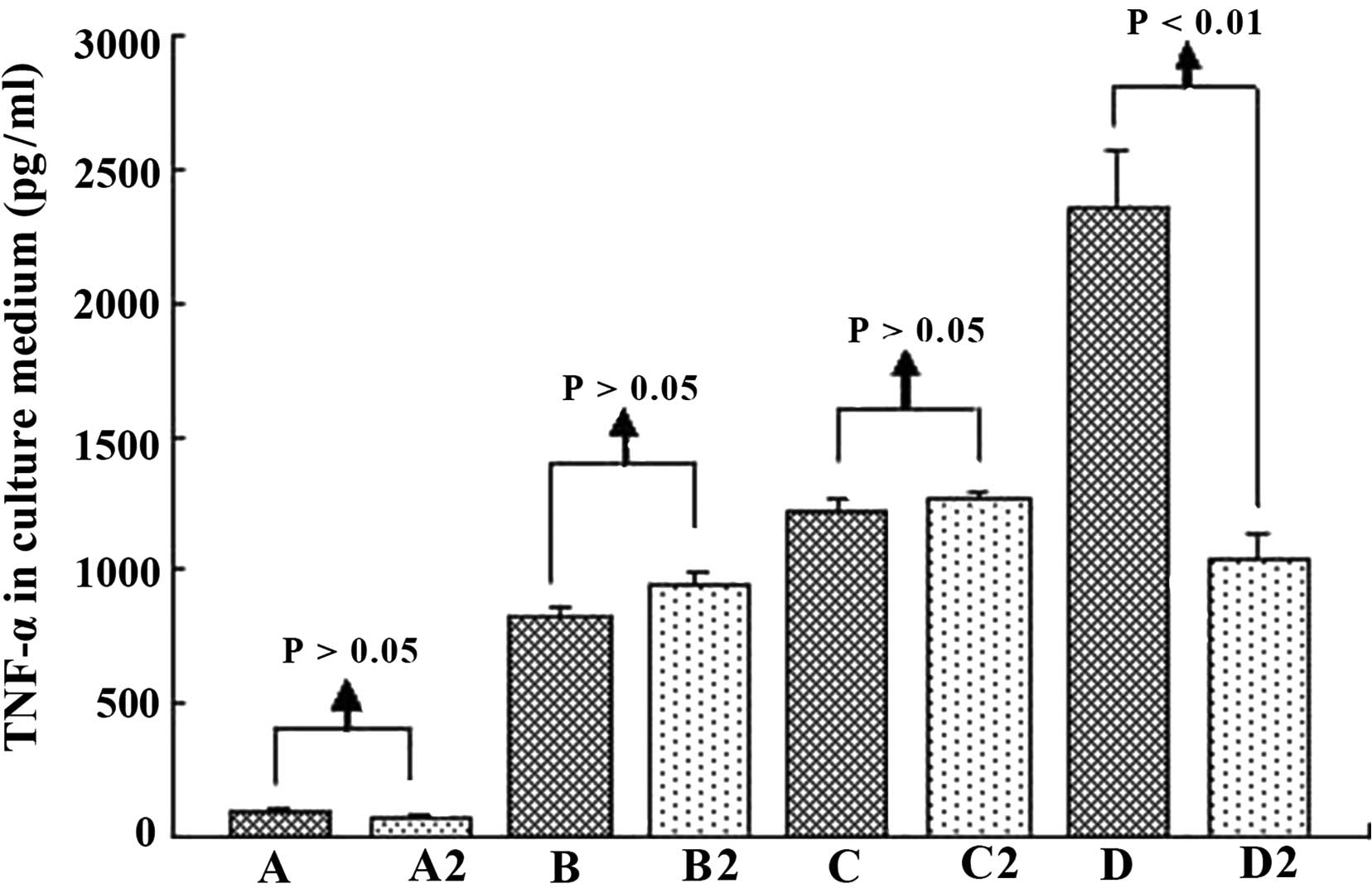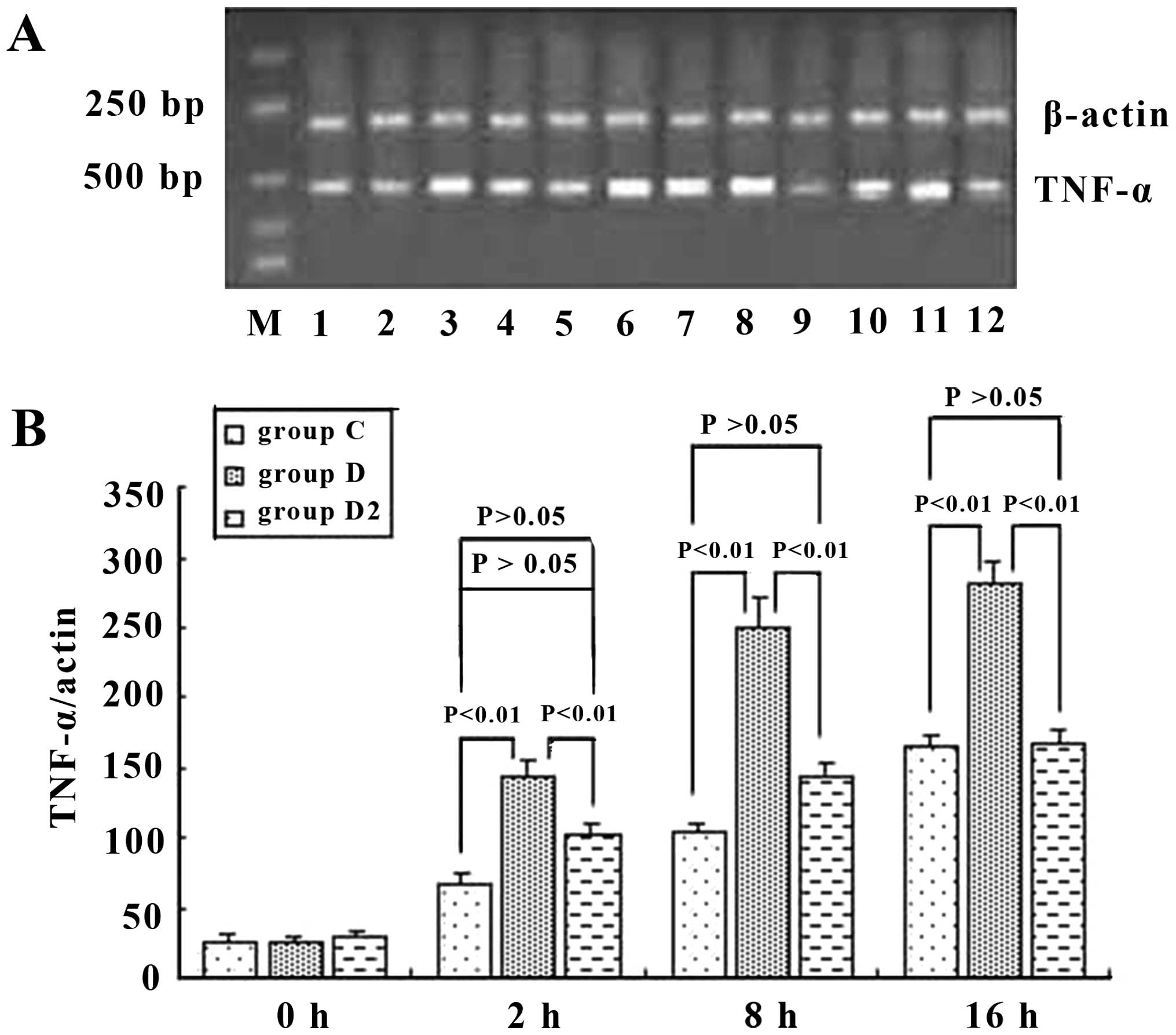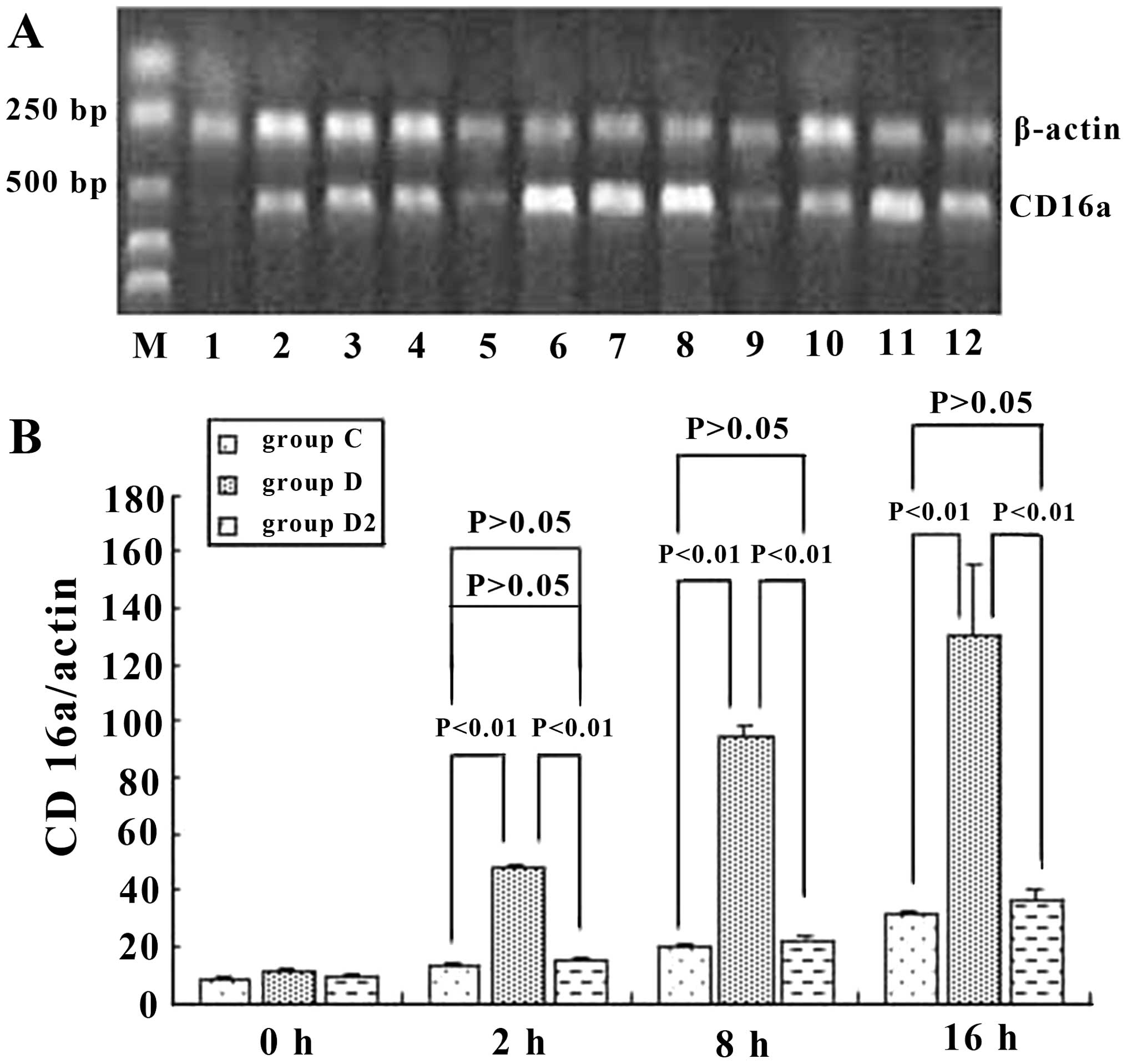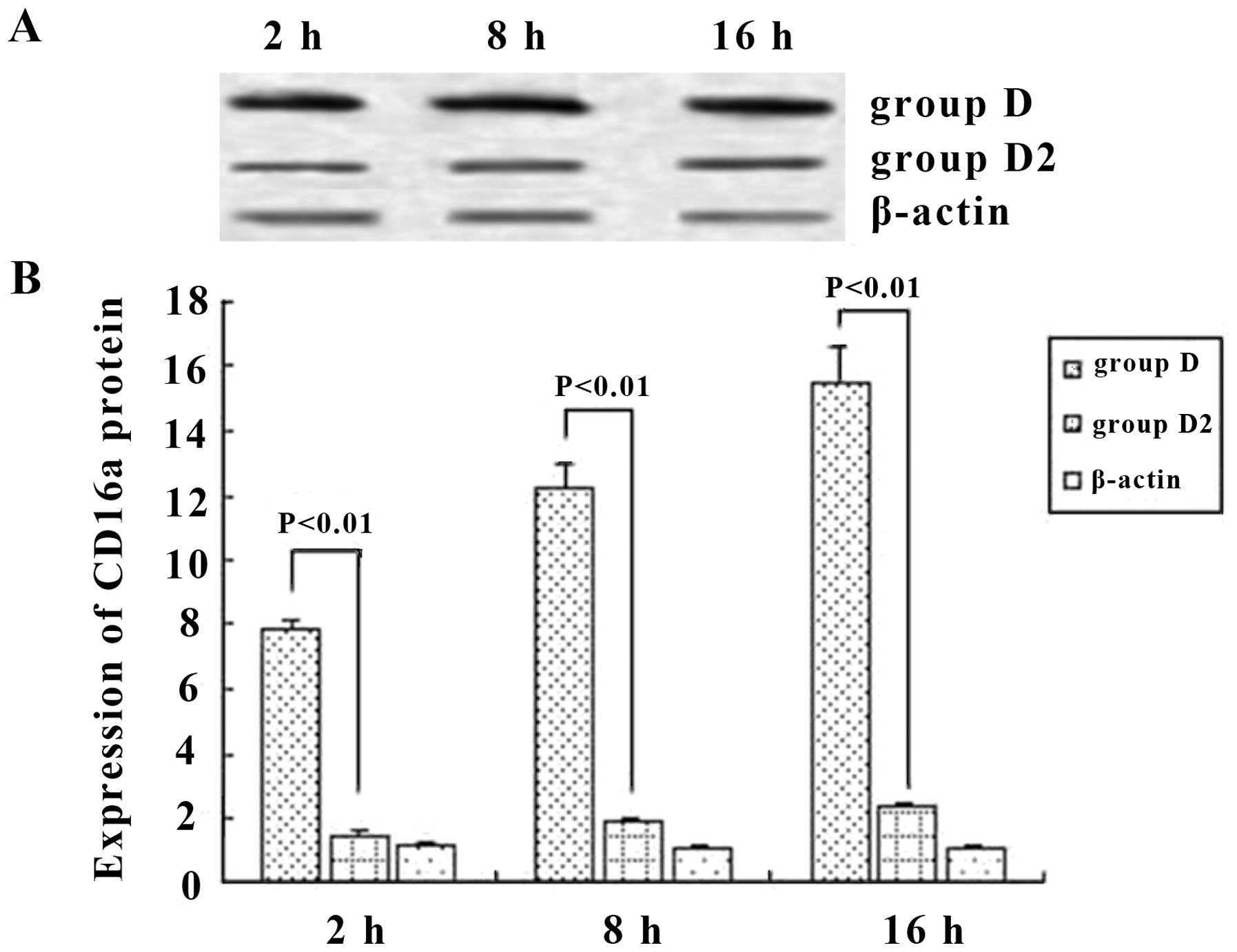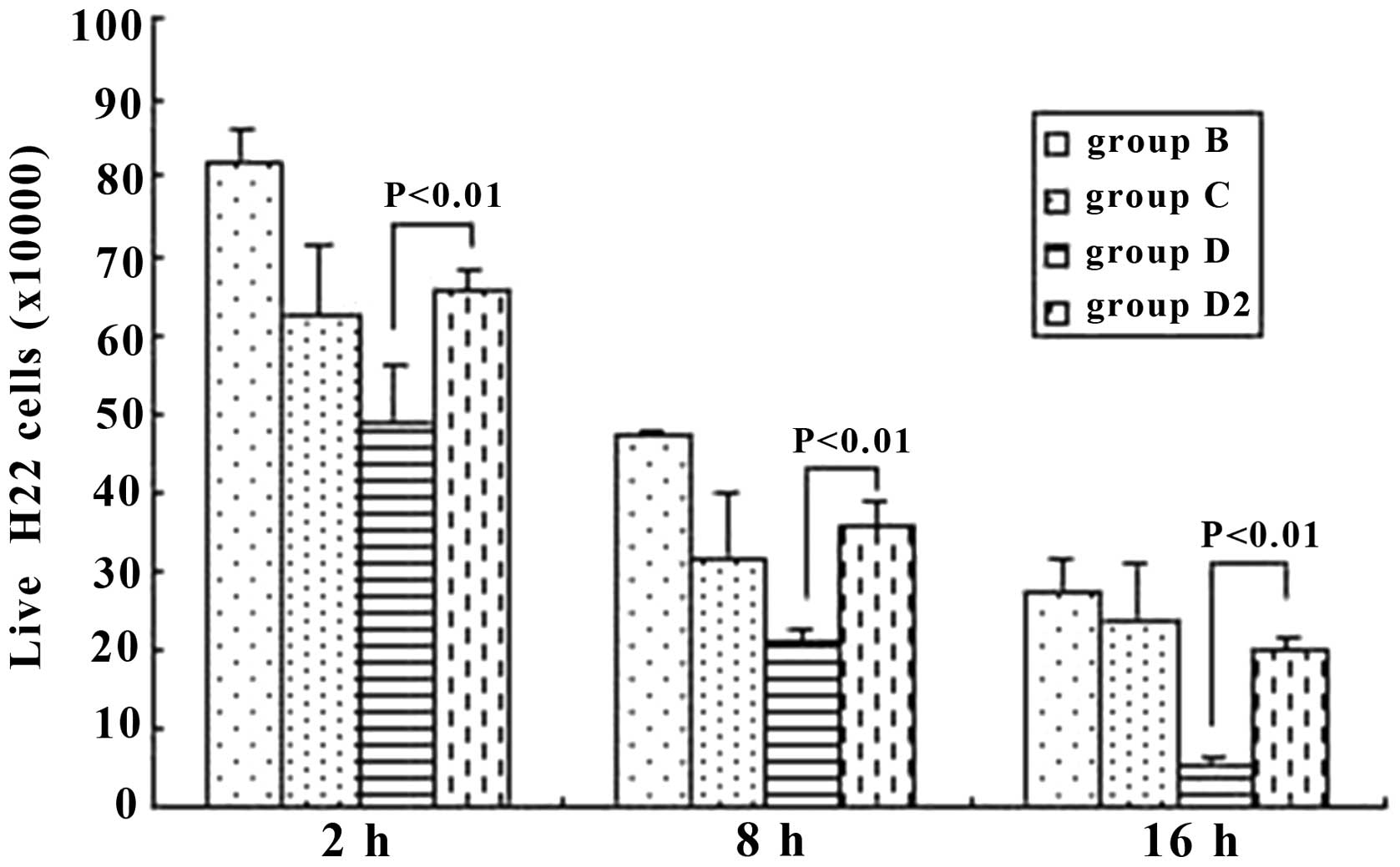|
1
|
Lafaro KJ, Demirjian AN and Pawlik TM:
Epidemiology of hepatocellular carcinoma. Surg Oncol Clin N Am.
24:1–17. 2015. View Article : Google Scholar
|
|
2
|
Liu ZM, Tseng HY, Tsai HW, Su FC and Huang
HS: Transforming growth factor β-interacting factor-induced
malignant progression of hepatocellular carcinoma cells depends on
superoxide production from Nox4. Free Radic Biol Med. 84:54–64.
2015. View Article : Google Scholar : PubMed/NCBI
|
|
3
|
Kaneda Y: Therapeutic strategies for
controlling the metastasis and recurrence of cancers: contribution
of drug delivery technologies. Adv Drug Deliv Rev. 64:707–709.
2012. View Article : Google Scholar : PubMed/NCBI
|
|
4
|
Leong WS, Thomas KA, Chan CH and Stevenson
GT: A standardized conversion of IgG antibody to bispecific form
with inversely altered affinities for Fcγ-receptors II and III. Mol
Immunol. 48:760–768. 2011. View Article : Google Scholar : PubMed/NCBI
|
|
5
|
Ehling J and Tacke F: Role of chemokine
pathways in hepatobiliary cancer. Cancer Lett. pii:
S0304-3835(15)00411-5. 2015. View Article : Google Scholar : PubMed/NCBI
|
|
6
|
Flaherty MM, MacLachlan TK, Troutt M,
Magee T, Tuaillon N, Johnson S, Stein KE, Bonvini E, Garman R and
Andrews L: Nonclinical evaluation of GMA161 - an antihuman CD16
(FcγRIII) monoclonal antibody for treatment of autoimmune disorders
in CD16 transgenic mice. Toxicol Sci. 125:299–309. 2012. View Article : Google Scholar
|
|
7
|
Herter S, Birk MC, Klein C, Gerdes C,
Umana P and Bacac M: Glycoengineering of therapeutic antibodies
enhances monocyte/macrophage-mediated phagocytosis and
cytotoxicity. J Immunol. 192:2252–2260. 2014. View Article : Google Scholar : PubMed/NCBI
|
|
8
|
Kobayashi E, Motoi S, Sugiura M, Kajikawa
M, Kojima S, Kohroki J and Masuho Y: Antibody-dependent cellular
cytotoxicity and cytokine/chemokine secretion by KHYG-1 cells
stably expressing FcγRIIIA. Immunol Lett. 161:59–64. 2014.
View Article : Google Scholar : PubMed/NCBI
|
|
9
|
Kainer M, Antes B, Wiederkum S,
Wozniak-Knopp G, Bauer A, Rüker F and Woisetschläger M: Correlation
between CD16a binding and immuno effector functionality of an
antigen specific immunoglobulin Fc fragment (Fcab). Arch Biochem
Biophys. 526:154–158. 2012. View Article : Google Scholar : PubMed/NCBI
|
|
10
|
Chaigne-Delalande B, Li FY, O'Connor GM,
Lukacs MJ, Jiang P, Zheng L, Shatzer A, Biancalana M, Pittaluga S,
Matthews HF, et al: Mg2+ regulates cytotoxic functions
of NK and CD8 T cells in chronic EBV infection through NKG2D.
Science. 341:186–191. 2013. View Article : Google Scholar : PubMed/NCBI
|
|
11
|
Zhou XP, Yang GS, Lu JH, Zhang HB, Li QG,
Han LZ and Zong M: Prospective study of liver parenchyma volume in
hepatectomy of primary liver cancer. Zhonghua Wai Ke Za Zhi.
43:1370–1374. 2005.In Chinese. PubMed/NCBI
|
|
12
|
Stănculeţ N, Grigoraş A, Avădanei R,
Floarea-Strat A, Amălinei C and Căruntu ID: Relationship between
Kuppfer cells, inflammation, and fibrosis in chronic hepatitis B
and C. Rev Med Chir Soc Med Nat Iasi. 117:880–889. 2013.
|
|
13
|
Liu ZJ, Yan LN, Li XH, Xu FL, Chen XF, You
HB and Gong JP: Up-regulation of IRAK-M is essential for endotoxin
tolerance induced by a low dose of lipopolysaccharide in Kupffer
cells. J Surg Res. 150:34–39. 2008. View Article : Google Scholar : PubMed/NCBI
|
|
14
|
Qu YH, Li Y, Wu YF, Fang JP, Huang SL,
Huang Y and Wei J: Influence of FcγRIIIa polymorphism on
rituximab-dependent NK cell-mediated cytotoxicity to Raji cells.
Zhongguo Shi Yan Xue Ye Xue Za Zhi. 18:1269–1274. 2010.In Chinese.
PubMed/NCBI
|
|
15
|
Liu C, Yang Z, Wang L, Lu Y, Tang B, Miao
H, Xu Q and Chen X: Combination of sorafenib and gadolinium
chloride (GdCl3) attenuates dimethylnitrosamine (DMN)-induced liver
fibrosis in rats. BMC Gastroenterol. 15:1592015. View Article : Google Scholar
|
|
16
|
Yang P, Zhou W, Li C, Zhang M, Jiang Y,
Jiang R, Ba H, Li C, Wang J, Yin B, et al: Kupffer-cell-expressed
trans-membrane TNF-α is a major contributor to lipopolysaccharide
and D-galactosamine-induced liver injury. Cell Tissue Res.
363:371–383. 2016. View Article : Google Scholar
|
|
17
|
Xu FL, You HB, Li XH, Chen XF, Liu ZJ and
Gong JP: Glycine attenuates endotoxin-induced liver injury by
downregulating TLR4 signaling in Kupffer cells. Am J Surg.
196:139–148. 2008. View Article : Google Scholar : PubMed/NCBI
|
|
18
|
Liu K, He X, Lei XZ, Zhao LS, Tang H, Liu
L and Lei BJ: Pathomorphological study on location and distribution
of Kupffer cells in hepatocellular carcinoma. World J
Gastroenterol. 9:1946–1949. 2003. View Article : Google Scholar : PubMed/NCBI
|
|
19
|
Tanaka M, Nakashima O, Wada Y, Kage M and
Kojiro M: Pathomorphological study of Kupffer cells in
hepatocellular carcinoma and hyperplastic nodular lesions in the
liver. Hepatology. 24:807–12. 1996. View Article : Google Scholar : PubMed/NCBI
|
|
20
|
Qian BZ and Pollard JW: Macrophage
diversity enhances tumor progression and metastasis. Cell.
141:39–51. 2010. View Article : Google Scholar : PubMed/NCBI
|
|
21
|
Fang W, Ye L, Shen L, Cai J, Huang F, Wei
Q, Fei X, Chen X, Guan H, Wang W, et al: Tumor-associated
macrophages promote the metastatic potential of thyroid papillary
cancer by releasing CXCL8. Carcinogenesis. 35:1780–1787. 2014.
View Article : Google Scholar : PubMed/NCBI
|
|
22
|
Eljaszewicz A, Wiese M, Helmin-Basa A,
Jankowski M, Gackowska L, Kubiszewska I, Kaszewski W, Michalkiewicz
J and Zegarski W: Collaborating with the enemy: function of
macrophages in the development of neoplastic disease. Mediators
Inflamm. 2013:8313872013. View Article : Google Scholar : PubMed/NCBI
|
|
23
|
Cortez-Retamozo V, Etzrodt M, Newton A,
Ryan R, Pucci F, Sio SW, Kuswanto W, Rauch PJ, Chudnovskiy A,
Iwamoto Y, et al: Angiotensin II drives the production of
tumor-promoting macrophages. Immunity. 38:296–308. 2013. View Article : Google Scholar : PubMed/NCBI
|
|
24
|
Westphal S, Brinkmann H, Kalupa M, Wilke
A, Seitz-Merwald I and Penack O: Anti-tumor effects of anti-T-cell
globulin. Exp Hematol. 42:875–882. 2014. View Article : Google Scholar : PubMed/NCBI
|
|
25
|
Liu Z, Leng EC, Gunasekaran K, Pentony M,
Shen M, Howard M, Stoops J, Manchulenko K, Razinkov V, Liu H, et
al: A novel antibody engineering strategy for making monovalent
bispecific heterodimeric IgG antibodies by electrostatic steering
mechanism. J Biol Chem. 290:7535–7562. 2015. View Article : Google Scholar : PubMed/NCBI
|
|
26
|
Poggi A, Boero S, Musso A and Zocchi MR:
Selective role of mevalonate pathway in regulating perforin but not
FasL and TNFalpha release in human Natural Killer cells. PLoS One.
8:e629322013. View Article : Google Scholar : PubMed/NCBI
|
|
27
|
Nimmerjahn F and Ravetch JV: Fcgamma
receptors as regulators of immune responses. Nat Rev Immunol.
8:34–47. 2008. View
Article : Google Scholar
|
|
28
|
Tseng MT, Lu X, Duan X, Hardas SS, Sultana
R, Wu P, Unrine JM, Graham U, Butterfield DA, Grulke E and Yokel
RA: Alteration of hepatic structure and oxidative stress induced by
intravenous nanoceria. Toxicol Appl Pharmacol. 260:173–182. 2012.
View Article : Google Scholar : PubMed/NCBI
|
|
29
|
Chen Q, Xue Y and Sun J: Kupffer
cell-mediated hepatic injury induced by silica nanoparticles in
vitro and in vivo. Int J Nanomedicine. 8:1129–1140. 2013.PubMed/NCBI
|
|
30
|
Cassard L, Cohen-Solal JF, Fournier EM,
Camilleri-Broët S, Spatz A, Chouaïb S, Badoual C, Varin A, Fisson
S, Duvillard P, et al: Selective expression of inhibitory Fcgamma
receptor by metastatic melanoma impairs tumor susceptibility to
IgG-dependent cellular response. Int J Cancer. 123:2832–2839. 2008.
View Article : Google Scholar : PubMed/NCBI
|
|
31
|
Ichiyama T, Ueno Y, Hasegawa M, Niimi A,
Matsubara T and Furukawa S: Intravenous immunoglobulin inhibits
NF-kappaB activation and affects Fcgamma receptor expression in
monocytes/macrophages. Naunyn Schmiedebergs Arch Pharmacol.
369:428–433. 2004. View Article : Google Scholar : PubMed/NCBI
|
|
32
|
Romain G, Senyukov V, Rey-Villamizar N,
Merouane A, Kelton W, Liadi I, Mahendra A, Charab W, Georgiou G,
Roysam B, et al: Antibody Fc engineering improves frequency and
promotes kinetic boosting of serial killing mediated by NK cells.
Blood. 124:3241–3249. 2014. View Article : Google Scholar : PubMed/NCBI
|
|
33
|
Frankenberger M, Ekici AB, Angstwurm MW,
Hoffmann H, Hofer TP, Heimbeck I, Meyer P, Lohse P, Wjst M,
Häus-singer K, et al: A defect of CD16-positive monocytes can occur
without disease. Immunobiology. 218:169–174. 2013. View Article : Google Scholar
|
|
34
|
Ramírez J, Fernández-Sueiro JL,
López-Mejías R, Montilla C, Arias M, Moll C, Alsina M, Sanmarti R,
Lozano F and Cañete JD: FCGR2A/CD32A and FCGR3A/CD16A variants and
EULAR response to tumor necrosis factor-α blockers in psoriatic
arthritis: a longitudinal study with 6 months of followup. J
Rheumatol. 39:1035–1041. 2012. View Article : Google Scholar
|
|
35
|
Liu Z, Gunasekaran K, Wang W, Razinkov V,
Sekirov L, Leng E, Sweet H, Foltz I, Howard M, Rousseau AM, et al:
Asymmetrical Fc engineering greatly enhances antibody-dependent
cellular cytotoxicity (ADCC) effector function and stability of the
modified antibodies. J Biol Chem. 289:3571–3590. 2014. View Article : Google Scholar :
|
|
36
|
Conry SJ, Meng Q, Hardy G, Yonkers NL,
Sugalski JM, Hirsch A, Davitkov P, Compan A, Falck-Ytter Y, Blanton
RE, et al: Genetically associated CD16(+)56(−) natural killer cell
interferon (IFN)-αR expression regulates signaling and is
implicated in IFN-α-induced hepatitis C virus decline. J Infect
Dis. 205:1131–1141. 2012. View Article : Google Scholar : PubMed/NCBI
|















